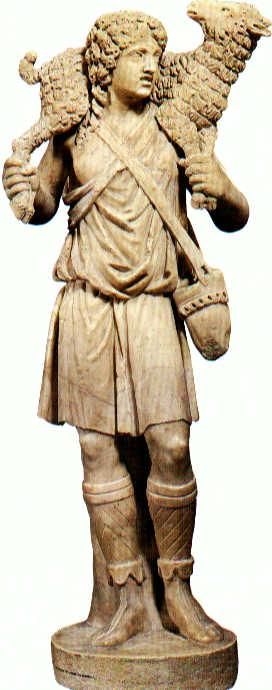Last week on of the founders of Catechesis of the Good Shepherd, Dr. Sofia Cavalletti, died  peacefully in her home. She and her colleague Gianna Gobbi developed their unique approach to catechesis in the 1950s. In honor of their achievements, I would like to share a few thoughts on this model of catechesis and how I think all catechists will find it inspirational.
peacefully in her home. She and her colleague Gianna Gobbi developed their unique approach to catechesis in the 1950s. In honor of their achievements, I would like to share a few thoughts on this model of catechesis and how I think all catechists will find it inspirational.
Today Catechesis of the Good Shepherd continues to grow rapidly in popularity. Many parishes have adopted the program for their pre-school and primary age children. It is said to be based on the Montessori model of education which has a strong focus on intrinsic learning. The National Association of the Catechesis of the Good Shepherd has a good summary of the characteristics of the program that are good background reading for these tips.
Lessons from Catechesis of the Good Shepherd
1. Focus on the Student not the Teacher
The only teacher in the Catechesis of the Good Shepherd’s atrium is Christ the Teacher. My wife, who spend some time as an aide in a CGS atrium and who is an experienced teacher, struggled the most with this. She had to resist the temptation to “teach” and explain what things mean (some call this inductive teaching). Instead catechists facilitate learning as a partner in the learning process. They allow the children the freedom to learn for themselves through discovery. They provide a simple message and do not elaborate or expand.
2. Learning Must Include Play
Leisure is a requirement for all learning. Be sure that you include games at every level of religious instruction to encourage motivation for learning. It always amazes me (though it shouldn’t) how often my students cite games as the best thing we do all year. Games engage students despite what we may think about the amount of time they take.
3. Focus on the Eucharist in Catechesis
The Eucharist is the “source and summit” of the Christian faith. It is at the core of all Catholic catechesis. All catechists should recognize the power of the Eucharist and talk about it often. However, we do not come to realize the power of the Eucharist through lessons and textbooks. Like all learning done in the atrium, the Eucharist is made known through experience. This is true liturgical catechesis and powerfully shown in Catechesis of the Good Shepherd
4. Use Physical Objects (Manipulatives)
In the education world, physical objects used as learning devices are called manipulatives. Manipulatives are great vehicles for learning especially at younger ages. Catechists in Catechesis of the Good Shepherd gather the supplies and materials needed to create these objects and custom make them for their atrium.
It is amazing to watch children from toddlers to elementary age learn through physical things. Using objects helps to make learning more concrete and enables discovery in education.
Discussing Catechesis of the Good Shepherd
What is your experience with this popular form of catechesis? Do you embrace or resist the Montessori model on which it is based? Do you have children who have experienced it? Have you seen the impact of the model long-term on children?
Post your comments below or share your thoughts on Facebook.



“It is amazing to watch children…learn through physical things.”
Yes. I use a wide assortment of ‘manipulatives’ during the catechetical year; although I call them ‘props.’
This is very good Jared!
There is quite a bit to learn from CGS, particularly how they relate the kids to the Eucharist and the calm, prayerful nature of it.
Are there websites available for teachers working in aground…where issues are discussed?
I just came back to my office after attending an open house at the only Catholic parish in my diocese using Catechesis of the Good Shepherd. I am overwhelmed (in a good way). My eyes teared up a couple of times, just seeing how perfectly this way of catechesis makes complete sense. I can see that this is a long slow process of becoming a Catechesis of the Good Shepherd parish. Excited. 🙂
Thanks for sharing Jared. We have a lot to learn from this model of handing on the faith.